Vintage Images of Canine Cosmonauts from the USSR
A postcard from 1960 showing Belka and Strelka in their rocket by the photomontage artist Sveshnikov. The flags read ‘Happy New Year’, on the wing of the rocket ‘USSR’, inside the cockpits ‘Strelka’, and ‘Belka’. (Photo: © FUEL Publishing)
On November 3, 1957, a dog named Laika was launched into space on the Sputnik 2, as part of the Soviet space program. She had not always been known as Laika; the scientists that found her on the street had given her the name. During the 1950s and 1960s, the USSR used stray dogs like Laika to determine whether human space flight would eventually be possible. Strays were used on the assumption that, if they could endure the hunger and frigid conditions that came with living on the streets of Moscow, there was a higher possibility of them surviving in space.
Unfortunately for Laika, while she was the first animal to orbit the earth, she did not survive the journey. Within hours of liftoff, she died from overheating. At the time, her death was seen as a noble sacrifice to the USSR. However, the true circumstances of her demise remained classified until 2002, and it was only after the fall of the Soviet Union that one of the scientists involved spoke of his regret over her treatment.
Between 1957 and 1966, nine dogs made orbital flights in the name of advancing the Soviet space program, and more still made sub-orbital flights in the mid-1950s. Across the USSR, these remarkable dogs were immortalized in posters, candy wrappers, cigarette packs, stamps and postcards. Fuel Publishing has brought together these unique portraits in the book, Soviet Space Dogs.
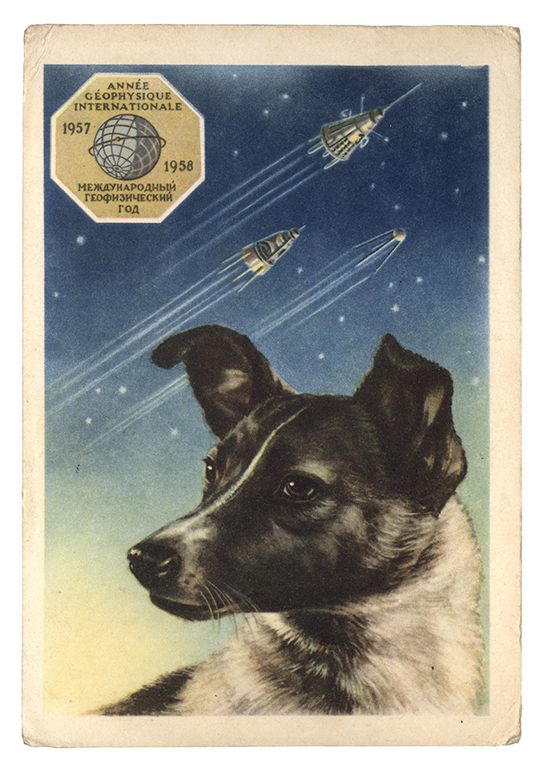
A 1958 postcard with a portrait of Laika by the artist E. Gundobin, with the first three Sputniks in the background. Text reads ‘International Geophysical Year 1957–1958’. (Photo: © FUEL Publishing)
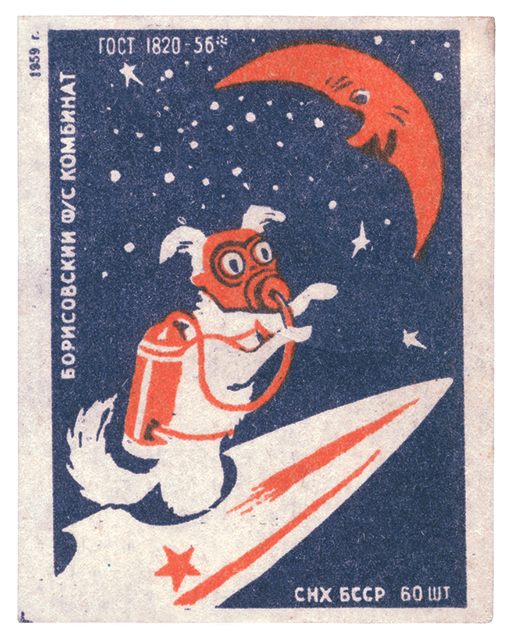
A matchbox label from 1959, showing a space dog flying to the Moon. (Photo: © FUEL Publishing/Marianne Van den Lemmer)

A confectionery tin from 1960 adorned with Strelka and Belka. These tins were given to young guests of the New Year’s Eve party at the Kremlin. (Photo: © FUEL Publishing / Marianne Van den Lemmer)

Matchbox label, USSR, c. 1957. One of many label designs celebrating the first living being in space. Text reads ‘The First Sputnik Passenger – the dog “Laika”’’. (Photo: © FUEL Publishing)

A USSR Space propaganda poster from 1960, by the artist K. Ivanov. Text reads ‘The way is open to man!’. (Photo: © FUEL Publishing)
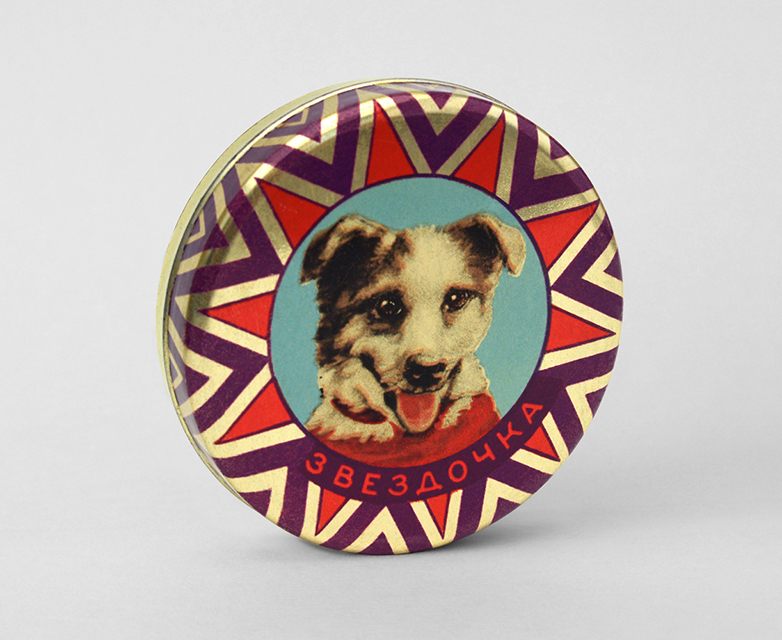
A confectionery tin from1960 with a portrait of Zvezdochka. (Photo: © FUEL Publishing / Marianne Van den Lemmer)

A postcard from Italy, c.1960, with an image of Kozyavka. (Photo: © FUEL Publishing/Marianne Van den Lemmer)
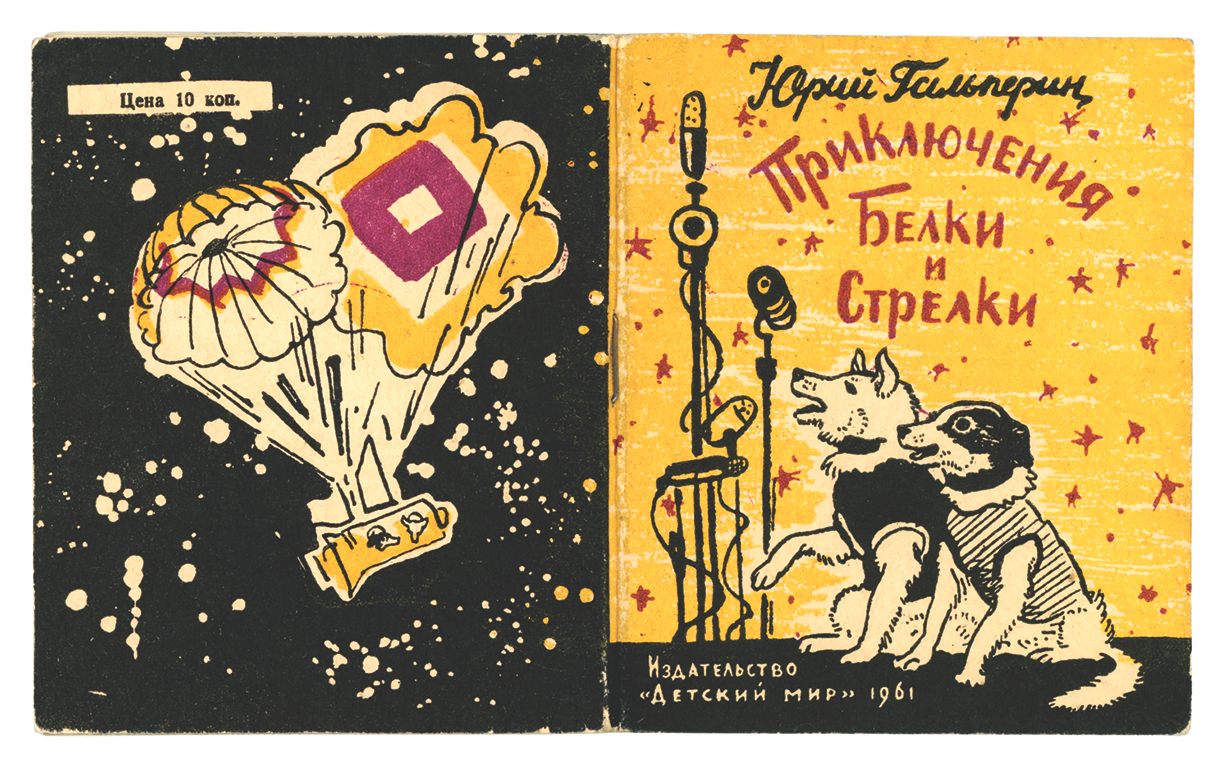
The Adventures of Belka and Strelka, a popular children’s book by Yuri Galperin, 1961. (Photo: © FUEL Publishing)
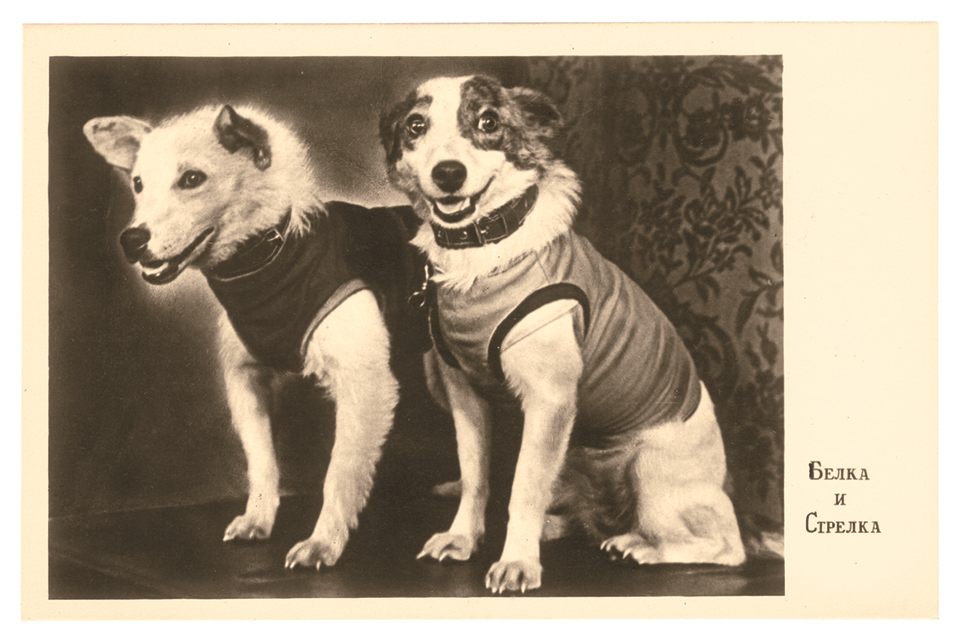
A postcard featuring a photograph taken at the Belka and Strelka’s first press conference, 1960. (Photo: © FUEL Publishing)
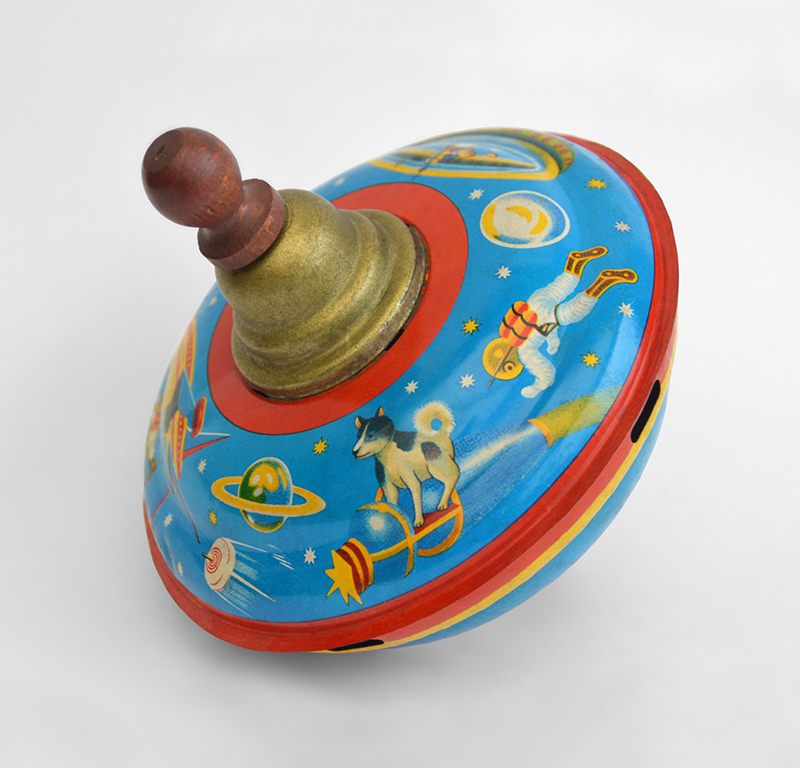
Spinning top, Japan, c.1958. Made by S. I. Toys, this spinning top depicts Laika standing on a version of Sputnik 2 surrounded by a space-themed frieze. Initially the lack of images released by the Soviet space program meant it was assumed that Sputnik 2 had the same design as Sputnik 1. (Photo: © FUEL Publishing / Marianne Van den Lemmer)
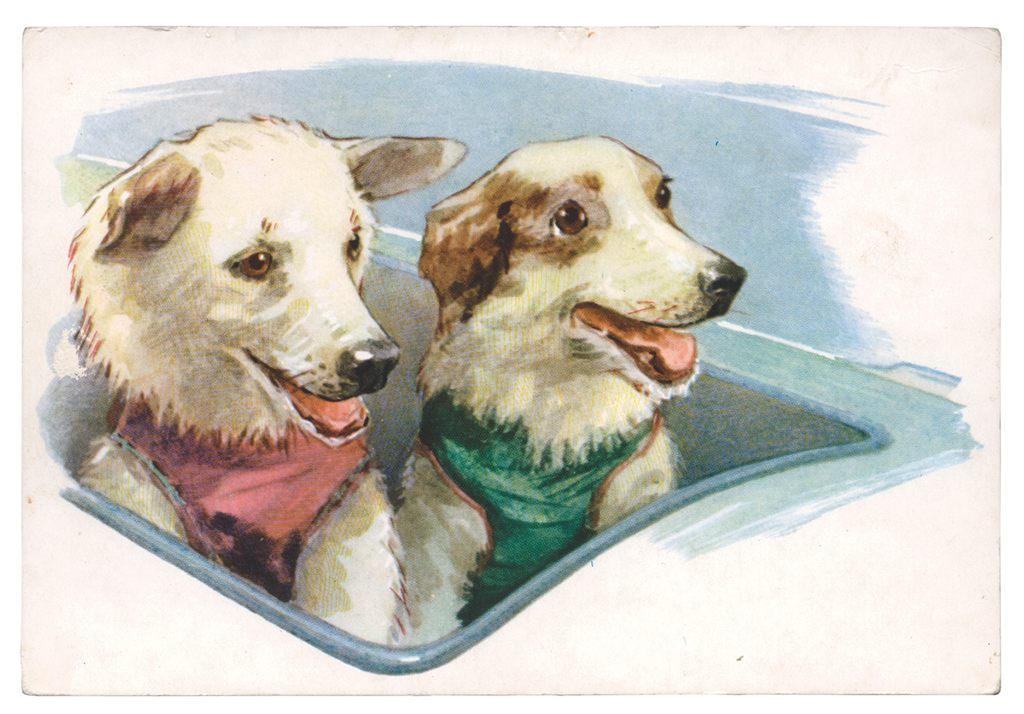
A 1972 postcard, depicting Belka and Strelka in the ‘cockpit’ of their rocket. By the artist L. Aristov, from the collection titled ‘Friends of Man’. (Photo: © FUEL Publishing)
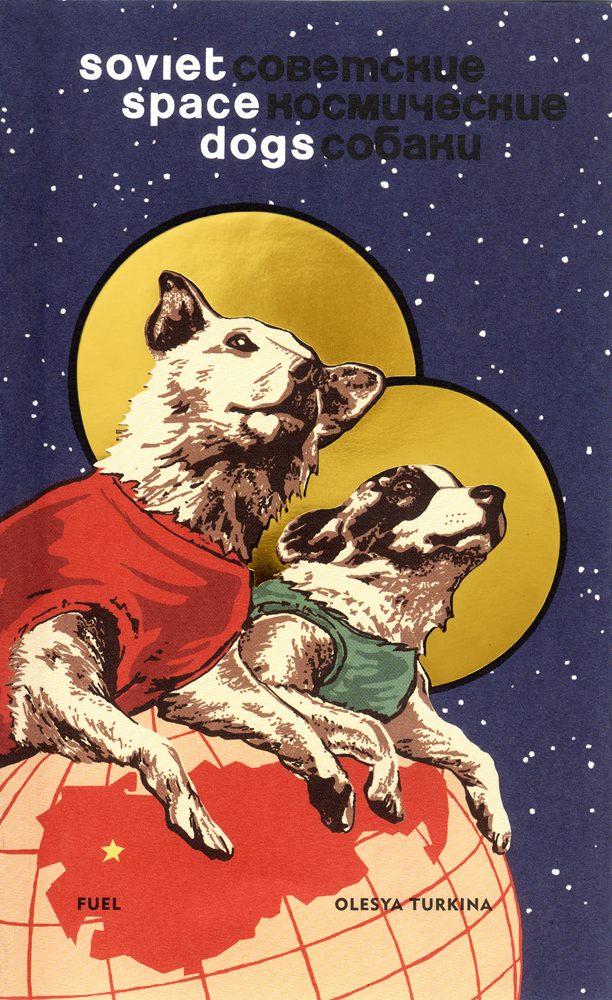
The cover of FUEL Publishing’s Soviet Space Dogs.





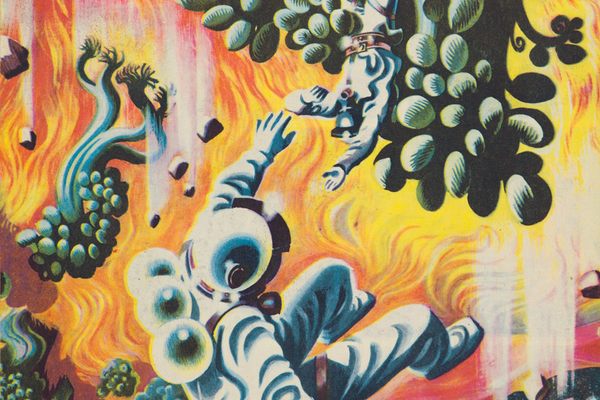













Follow us on Twitter to get the latest on the world's hidden wonders.
Like us on Facebook to get the latest on the world's hidden wonders.
Follow us on Twitter Like us on Facebook